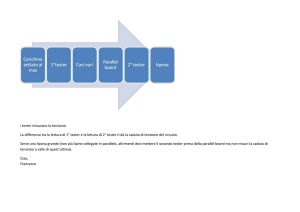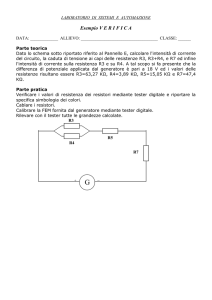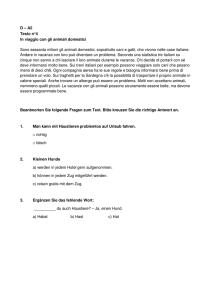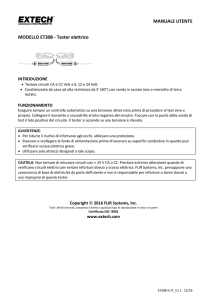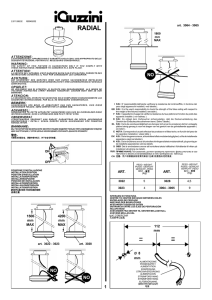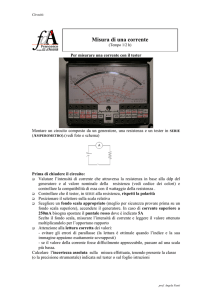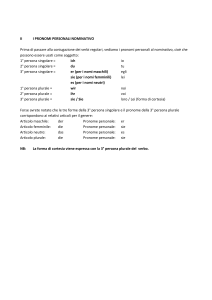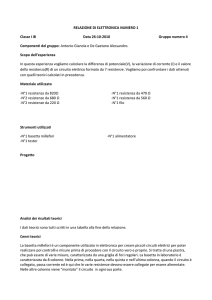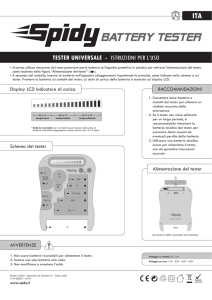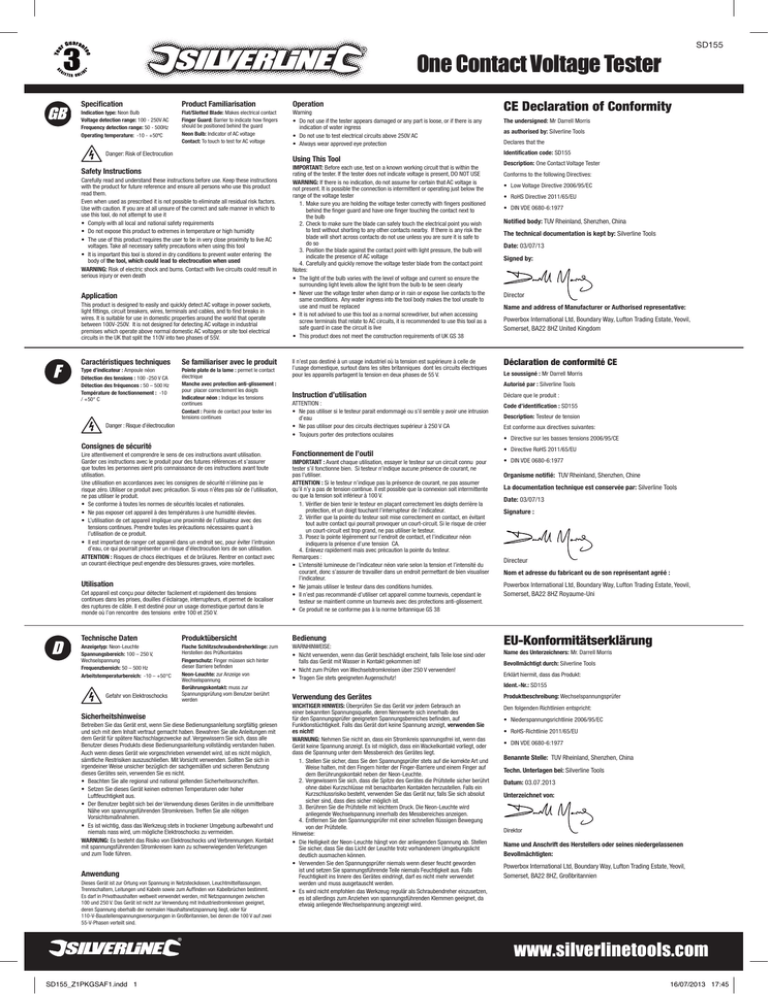
®
SD155
One Contact Voltage Tester
Specification
Product Familiarisation
Operation
Indication type: Neon Bulb
Voltage detection range: 100 - 250V AC
Frequency detection range: 50 - 500Hz
Operating temperature: -10 - +50ºC
Flat/Slotted Blade: Makes electrical contact
Finger Guard: Barrier to indicate how fingers
should be positioned behind the guard
Neon Bulb: Indicator of AC voltage
Contact: To touch to test for AC voltage
Warning
• Do not use if the tester appears damaged or any part is loose, or if there is any
indication of water ingress
• Do not use to test electrical circuits above 250V AC
• Always wear approved eye protection
Danger: Risk of Electrocution
Using This Tool
Safety Instructions
Carefully read and understand these instructions before use. Keep these instructions
with the product for future reference and ensure all persons who use this product
read them.
Even when used as prescribed it is not possible to eliminate all residual risk factors.
Use with caution. If you are at all unsure of the correct and safe manner in which to
use this tool, do not attempt to use it
• Comply with all local and national safety requirements
• Do not expose this product to extremes in temperature or high humidity
• The use of this product requires the user to be in very close proximity to live AC
voltages. Take all necessary safety precautions when using this tool
• It is important this tool is stored in dry conditions to prevent water entering the
body of the tool, which could lead to electrocution when used
WARNING: Risk of electric shock and burns. Contact with live circuits could result in
serious injury or even death
Application
This product is designed to easily and quickly detect AC voltage in power sockets,
light fittings, circuit breakers, wires, terminals and cables, and to find breaks in
wires. It is suitable for use in domestic properties around the world that operate
between 100V-250V. It is not designed for detecting AC voltage in industrial
premises which operate above normal domestic AC voltages or site tool electrical
circuits in the UK that split the 110V into two phases of 55V.
Caractéristiques techniques
Se familiariser avec le produit
Type d’indicateur : Ampoule néon
Détection des tensions : 100 -250 V CA
Détection des fréquences : 50 – 500 Hz
Température de fonctionnement : -10
/ +50° C
Pointe plate de la lame : permet le contact
électrique
Manche avec protection anti-glissement :
pour placer correctement les doigts
Indicateur néon : Indique les tensions
continues
Contact : Pointe de contact pour tester les
tensions continues
Danger : Risque d’électrocution
Consignes de sécurité
Lire attentivement et comprendre le sens de ces instructions avant utilisation.
Garder ces instructions avec le produit pour des futures références et s’assurer
que toutes les personnes aient pris connaissance de ces instructions avant toute
utilisation.
Une utilisation en accordances avec les consignes de sécurité n’élimine pas le
risque zéro. Utiliser ce produit avec précaution. Si vous n’êtes pas sûr de l’utilisation,
ne pas utiliser le produit.
• Se conforme à toutes les normes de sécurités locales et nationales.
• Ne pas exposer cet appareil à des températures à une humidité élevées.
• L’utilisation de cet appareil implique une proximité de l’utilisateur avec des
tensions continues. Prendre toutes les précautions nécessaires quant à
l’utilisation de ce produit.
• Il est important de ranger cet appareil dans un endroit sec, pour éviter l’intrusion
d’eau, ce qui pourrait présenter un risque d’électrocution lors de son utilisation.
ATTENTION : Risques de chocs électriques et de brûlures. Rentrer en contact avec
un courant électrique peut engendre des blessures graves, voire mortelles.
Utilisation
Cet appareil est conçu pour détecter facilement et rapidement des tensions
continues dans les prises, douilles d’éclairage, interrupteurs, et permet de localiser
des ruptures de câble. Il est destiné pour un usage domestique partout dans le
monde où l’on rencontre des tensions entre 100 et 250 V.
IMPORTANT: Before each use, test on a known working circuit that is within the
rating of the tester. If the tester does not indicate voltage is present, DO NOT USE
WARNING: If there is no indication, do not assume for certain that AC voltage is
not present. It is possible the connection is intermittent or operating just below the
range of the voltage tester
1.Make sure you are holding the voltage tester correctly with fingers positioned
behind the finger guard and have one finger touching the contact next to
the bulb
2.Check to make sure the blade can safely touch the electrical point you wish
to test without shorting to any other contacts nearby. If there is any risk the
blade will short across contacts do not use unless you are sure it is safe to
do so
3.Position the blade against the contact point with light pressure, the bulb will
indicate the presence of AC voltage
4.Carefully and quickly remove the voltage tester blade from the contact point
Notes:
• The light of the bulb varies with the level of voltage and current so ensure the
surrounding light levels allow the light from the bulb to be seen clearly
• Never use the voltage tester when damp or in rain or expose live contacts to the
same conditions. Any water ingress into the tool body makes the tool unsafe to
use and must be replaced
• It is not advised to use this tool as a normal screwdriver, but when accessing
screw terminals that relate to AC circuits, it is recommended to use this tool as a
safe guard in case the circuit is live
• This product does not meet the construction requirements of UK GS 38
Il n’est pas destiné à un usage industriel où la tension est supérieure à celle de
l’usage domestique, surtout dans les sites britanniques dont les circuits électriques
pour les appareils partagent la tension en deux phases de 55 V.
Description: One Contact Voltage Tester
Conforms to the following Directives:
• Low Voltage Directive 2006/95/EC
• RoHS Directive 2011/65/EU
• DIN VDE 0680-6:1977
Notified body: TUV Rheinland, Shenzhen, China
The technical documentation is kept by: Silverline Tools
Date: 03/07/13
Signed by:
Director
Name and address of Manufacturer or Authorised representative:
Powerbox International Ltd, Boundary Way, Lufton Trading Estate, Yeovil,
Somerset, BA22 8HZ United Kingdom
Déclaration de conformité CE
Le soussigné : Mr Darrell Morris
Code d’identification : SD155
Fonctionnement de l’outil
• Directive RoHS 2011/65/EU
IMPORTANT : Avant chaque utilisation, essayer le testeur sur un circuit connu pour
tester s’il fonctionne bien. Si testeur n’indique aucune présence de courant, ne
pas l’utiliser.
ATTENTION : Si le testeur n’indique pas la présence de courant, ne pas assumer
qu’il n’y a pas de tension continue. Il est possible que la connexion soit intermittente
ou que la tension soit inférieur à 100 V.
1.Vérifier de bien tenir le testeur en plaçant correctement les doigts derrière la
protection, et un doigt touchant l’interrupteur de l’indicateur.
2.Vérifier que la pointe du testeur soit mise correctement en contact, en évitant
tout autre contact qui pourrait provoquer un court-circuit. Si le risque de créer
un court-circuit est trop grand, ne pas utiliser le testeur.
3.Posez la pointe légèrement sur l’endroit de contact, et l’indicateur néon
indiquera la présence d’une tension CA.
4.Enlevez rapidement mais avec précaution la pointe du testeur.
Remarques :
• L’intensité lumineuse de l’indicateur néon varie selon la tension et l’intensité du
courant, donc s’assurer de travailler dans un endroit permettant de bien visualiser
l’indicateur.
• Ne jamais utiliser le testeur dans des conditions humides.
• Il n’est pas recommandé d’utiliser cet appareil comme tournevis, cependant le
testeur se maintient comme un tournevis avec des protections anti-glissement.
• Ce produit ne se conforme pas à la norme britannique GS 38
Bedienung
WARNHINWEISE:
• Nicht verwenden, wenn das Gerät beschädigt erscheint, falls Teile lose sind oder
falls das Gerät mit Wasser in Kontakt gekommen ist!
• Nicht zum Prüfen von Wechselstromkreisen über 250 V verwenden!
• Tragen Sie stets geeigneten Augenschutz!
Dieses Gerät ist zur Ortung von Spannung in Netzsteckdosen, Leuchtmittelfassungen,
Trennschaltern, Leitungen und Kabeln sowie zum Auffinden von Kabelbrüchen bestimmt.
Es darf in Privathaushalten weltweit verwendet werden, mit Netzspannungen zwischen
100 und 250 V. Das Gerät ist nicht zur Verwendung mit Industriestromkreisen geeignet,
deren Spannung oberhalb der normalen Haushaltsnetzspannung liegt, oder für
110-V-Baustellenspannungsversorgungen in Großbritannien, bei denen die 100 V auf zwei
55-V-Phasen verteilt sind.
Identification code: SD155
Déclare que le produit :
Flache Schlitzschraubendreherklinge: zum
Herstellen des Prüfkontaktes
Fingerschutz: Finger müssen sich hinter
dieser Barriere befinden
Neon-Leuchte: zur Anzeige von
Wechselspannung
Berührungskontakt: muss zur
Spannungsprüfung vom Benutzer berührt
werden
Anwendung
Declares that the
ATTENTION :
• Ne pas utiliser si le testeur parait endommagé ou s’il semble y avoir une intrusion
d’eau
• Ne pas utiliser pour des circuits électriques supérieur à 250 V CA
• Toujours porter des protections oculaires
Produktübersicht
Betreiben Sie das Gerät erst, wenn Sie diese Bedienungsanleitung sorgfältig gelesen
und sich mit dem Inhalt vertraut gemacht haben. Bewahren Sie alle Anleitungen mit
dem Gerät für spätere Nachschlagezwecke auf. Vergewissern Sie sich, dass alle
Benutzer dieses Produkts diese Bedienungsanleitung vollständig verstanden haben.
Auch wenn dieses Gerät wie vorgeschrieben verwendet wird, ist es nicht möglich,
sämtliche Restrisiken auszuschließen. Mit Vorsicht verwenden. Sollten Sie sich in
irgendeiner Weise unsicher bezüglich der sachgemäßen und sicheren Benutzung
dieses Gerätes sein, verwenden Sie es nicht.
• Beachten Sie alle regional und national geltenden Sicherheitsvorschriften.
• Setzen Sie dieses Gerät keinen extremen Temperaturen oder hoher
Luftfeuchtigkeit aus.
• Der Benutzer begibt sich bei der Verwendung dieses Gerätes in die unmittelbare
Nähe von spannungsführenden Stromkreisen. Treffen Sie alle nötigen
Vorsichtsmaßnahmen.
• Es ist wichtig, dass das Werkzeug stets in trockener Umgebung aufbewahrt und
niemals nass wird, um mögliche Elektroschocks zu vermeiden.
WARNUNG: Es besteht das Risiko von Elektroschocks und Verbrennungen. Kontakt
mit spannungsführenden Stromkreisen kann zu schwerwiegenden Verletzungen
und zum Tode führen.
as authorised by: Silverline Tools
Autorisé par : Silverline Tools
Anzeigetyp: Neon-Leuchte
Spannungsbereich: 100 – 250 V,
Wechselspannung
Frequenzbereich: 50 – 500 Hz
Arbeitstemperaturbereich: -10 – +50°C
Sicherheitshinweise
The undersigned: Mr Darrell Morris
Instruction d’utilisation
Technische Daten
Gefahr von Elektroschocks
CE Declaration of Conformity
Description: Testeur de tension
Est conforme aux directives suivantes:
• Directive sur les basses tensions 2006/95/CE
• DIN VDE 0680-6:1977
Organisme notifié: TUV Rheinland, Shenzhen, Chine
La documentation technique est conservée par: Silverline Tools
Date: 03/07/13
Signature :
Directeur
Nom et adresse du fabricant ou de son représentant agréé :
Powerbox International Ltd, Boundary Way, Lufton Trading Estate, Yeovil,
Somerset, BA22 8HZ Royaume-Uni
EU-Konformitätserklärung
Name des Unterzeichners: Mr. Darrell Morris
Bevollmächtigt durch: Silverline Tools
Erklärt hiermit, dass das Produkt:
Ident.-Nr.: SD155
Verwendung des Gerätes
Produktbeschreibung: Wechselspannungsprüfer
WICHTIGER HINWEIS: Überprüfen Sie das Gerät vor jedem Gebrauch an
einer bekannten Spannungsquelle, deren Nennwerte sich innerhalb des
für den Spannungsprüfer geeigneten Spannungsbereiches befinden, auf
Funktionstüchtigkeit. Falls das Gerät dort keine Spannung anzeigt, verwenden Sie
es nicht!
WARNUNG: Nehmen Sie nicht an, dass ein Stromkreis spannungsfrei ist, wenn das
Gerät keine Spannung anzeigt. Es ist möglich, dass ein Wackelkontakt vorliegt, oder
dass die Spannung unter dem Messbereich des Gerätes liegt.
1.Stellen Sie sicher, dass Sie den Spannungsprüfer stets auf die korrekte Art und
Weise halten, mit den Fingern hinter der Finger-Barriere und einem Finger auf
dem Berührungskontakt neben der Neon-Leuchte.
2.Vergewissern Sie sich, dass die Spitze des Gerätes die Prüfstelle sicher berührt
ohne dabei Kurzschlüsse mit benachbarten Kontakten herzustellen. Falls ein
Kurzschlussrisiko besteht, verwenden Sie das Gerät nur, falls Sie sich absolut
sicher sind, dass dies sicher möglich ist.
3.Berühren Sie die Prüfstelle mit leichtem Druck. Die Neon-Leuchte wird
anliegende Wechselspannung innerhalb des Messbereiches anzeigen.
4.Entfernen Sie den Spannungsprüfer mit einer schnellen flüssigen Bewegung
von der Prüfstelle.
Hinweise:
• Die Helligkeit der Neon-Leuchte hängt von der anliegenden Spannung ab. Stellen
Sie sicher, dass Sie das Licht der Leuchte trotz vorhandenem Umgebungslicht
deutlich ausmachen können.
• Verwenden Sie den Spannungsprüfer niemals wenn dieser feucht geworden
ist und setzen Sie spannungsführende Teile niemals Feuchtigkeit aus. Falls
Feuchtigkeit ins Innere des Gerätes eindringt, darf es nicht mehr verwendet
werden und muss ausgetauscht werden.
• Es wird nicht empfohlen das Werkzeug regulär als Schraubendreher einzusetzen,
es ist allerdings zum Anziehen von spannungsführenden Klemmen geeignet, da
etwaig anliegende Wechselspannung angezeigt wird.
Den folgenden Richtlinien entspricht:
• Niederspannungsrichtlinie 2006/95/EC
• RoHS-Richtlinie 2011/65/EU
• DIN VDE 0680-6:1977
Benannte Stelle: TUV Rheinland, Shenzhen, China
Techn. Unterlagen bei: Silverline Tools
Datum: 03.07.2013
Unterzeichnet von:
Direktor
Name und Anschrift des Herstellers oder seines niedergelassenen
Bevollmächtigten:
Powerbox International Ltd, Boundary Way, Lufton Trading Estate, Yeovil,
Somerset, BA22 8HZ, Großbritannien
www.silverlinetools.com
SD155_Z1PKGSAF1.indd 1
16/07/2013 17:45
Características técnicas
Características del producto
Funcionamiento
Tipo de indicación: Luz de neón
Margen de detección de voltaje: 100 – 250 V CA
Margen de detección de frecuencia:
50 - 500 Hz
Temperatura de funcionamiento: -10 - + 50º C
Punta de detección: Buscapolos.
Protección para los dedos: Indicador
para posicionar los dedos correctamente
detrás del protector.
Luz de neón: Indica el voltaje de CA
Contacto: Para comprobar voltajes de CA
Advertencia
• No utilice el voltímetro si está dañado, no funciona correctamente o ha entrado
en contacto con el agua.
• No utilice esta herramienta en voltajes superiores a 250 V CA.
• Lleve siempre protección ocular.
Peligro: Riesgo de electrocución
Instrucciones de seguridad
Lea detenidamente el manual de instrucciones antes de usar este producto. Guarde
las instrucciones con el producto para consultarlas en otro momento. Asegúrese de
que todas las personas que utilicen este producto hayan entendido correctamente
este manual.
Incluso cuando se esté utilizando según lo prescrito, no es posible eliminar todos
los factores de riesgo residuales. Utilice esta herramienta con precaución. Si no está
completamente seguro de cómo utilizar este producto correctamente, no intente
utilizarlo.
• Siga las instrucciones de seguridad en todo momento.
• No exponga esta herramienta a temperaturas extremas o alta humedad.
• Para utilizar esta herramienta necesitará estar lo más cerca posible de la fuente
de voltaje de CA. Tenga mucha precaución cuando utilice esta herramienta.
• Guarde siempre esta herramienta en un lugar seco y seguro. No deje que la
herramienta entre en contacto con el agua, podría causar riesgo de electrocución.
ADVERTENCIA: Riesgo eléctrico y quemaduras. El contacto eléctrico directo puede
causar daños personales graves e incluso la muerte.
Utilización
Este producto está diseñado para detectar de forma rápida voltaje de corriente
alterna en tomas de corriente, enchufes, cables, terminales además de detectar
cables rotos. Este producto sólo puede utilizarse en circuitos domésticos con voltajes
entre 100 - 250 V. Esta herramienta no puede utilizarse en instalaciones industriales
con voltajes superiores al voltaje doméstico convencional.
Descripción: Buscapolos electrónico
Attenzione
• Non utilizzare se il tester è danneggiato o qualsiasi parte si è allentata, o se c'è
alcuna indicazione di ingresso di acqua
• Non utilizzare per verificare i circuiti elettrici di cui sopra 250V AC
• Indossare sempre occhiali di protezione approvata
Usando questo strumento
IMPORTANTE: Prima di ogni utilizzo, prova su un circuito in funzione che è entro i
valori nominali del tester. Se il tester non indica tensione, NON USARE
ATTENZIONE: Se non c’è alcuna indicazione, non si assume per certo che la
tensione CA non è presente. È possibile che la connessione è intermittente o
operanti sotto la gamma del tester tensione
1.Assicurarsi che si tiene il tester di tensione correttamente con le dita
posizionate dietro la protezione per le dita e posizionare un dito sull contatto
vicino alla lampadina
2.Verificare che la lama può tranquillamente toccare il punto elettrico che si
desidera verificare, senza cortocircuiti verso altri contatti nelle vicinanze. Se
c’è alcun rischio che la lama esegue un cortocircuito tra i contatti non usare se
non si è sicuri che sia sicuro farlo
3.Posizionare la lama contro il punto di contatto con una leggera pressione, la
lampadina indica la presenza di tensione AC
4.Accuratamente e rapidamente rimuovere la lama del tester di tensione dal
punto di contatto
Note:
• La luce della lampadina varia con il livello di tensione e corrente quindi assicurare
che i livelli di luce circostanti consentono la luce della lampadina di essere vista
chiaramente
• Non usare mai il tester di tensione quando umido o sotto la pioggia o esporre
contatti sotto tensione nelle stesse condizioni. La penetrazione di acqua nel corpo
dell'utensile rende lo strumento insicuro da utilizzare e deve essere sostituito
• Non è consigliato l'utilizzo di questo strumento come un cacciavite normale,
ma quando si accede a morsetti a vite che si riferiscono ai circuiti a corrente
alternata, si consiglia di utilizzare questo strumento come una guardia di
sicurezza nel caso in cui il circuito è sotto tensione
Productbeschrijving
Gebruik
Plat/sleuf blad: Maakt elektrisch contact
Vingerafscherming: Uw vingers horen achter
deze grens geplaats te worden
Neon licht: Duidt op de aanwezigheid van AV
spanning
Contact: Vangt de spanning op
Waarschuwing
• Gebruik de spanningzoeker niet wanneer beschadigd of bij een indicatie van
waterschade
• Gebruik de spanningzoeker niet voor stroomkringen met een spanning boven
de 250 V AC
• Draag te allen tijde de juiste oogbescherming
Lees deze handleiding aandachtig door voordat u de spanningzoeker gebruikt.
Houdt de instructies bij het product voor toekomstig gebruik. Zorg ervoor dat iedere
gebruiker volledig bekend is met de informatie in deze handleiding.
Zelfs wanneer de spanningzoeker volledig volgens instructies wordt gebruikt, zijn
alle risicofactoren niet volledig uit te sluiten. Gebruik met beleid. Bij enige twijfel met
betrekking tot juist en veilig gebruik van het product, gebruik het niet
• Leef alle lokale en nationale veiligheidsvoorschriften na
• Stel het product niet bloot aan extreme temperaturen en vochtigheden
• Bij het gebruik van de spanningzoeker bevindt de gebruiker zich in de nabijheid
van AC spanning. Neem alle nodige veiligheidsmaatregelen bij het gebruik van
de spanningzoeker
• Het is belangrijk de spanningzoeker in droge omstandigheden op te bergen om
het binnendringen van water, wat mogelijk leidt tot elektrocutie, te voorkomen
WAARSCHUWING: Het risico op elektrische schok en verbranding is aanwezig. De
aanraking met stroomkringen kan leiden tot ernstig letsel of zelfs overleiden
Toepassing
De spanningzoeker is ontworpen voor een snelle en gemakkelijke opsporing van
AC spanning in stopcontacten, lichtaansluitingen, zekeringen, draden, contacten en
kabels en voor het opsporen van kabelbreuken. Het is geschikt voor huishoudelijke
woningen met een 100-250 V spanning. De spanningzoeker is niet geschikt voor
gebruik in industriële gebouwen met een AC spanningen boven normaal niveau en
GB stroomkringen waarin de 110 V in twee 55 V fases wordt gesplitst.
• DIN VDE 0680-6:1977
Organismo notificado: TUV Rheinland, Shenzhen, China
La documentación técnica se conserva en: Silverline Tools
Fecha: 03/07/13
Firma:
Director
Nombre y dirección del fabricante o representante autorizado:
Dichiarazione di conformità CE
Il sottoscritto: Sig. Darrell Morris
come autorizzato di: Silverline Tools
Dichiara che il prodotto:
Codice di identificazione: SD155
Descrizione: Tester per rete elettrica
Si conforma ai seguenti direttivi:
• Direttiva sulla bassa tensione 2006/95/CE
• Direttiva RoHS 2011/65/EU
• DIN VDE 0680-6:1977
Organismo informato: TUV Rheinland, Shenzhen, Cina
La documentazione tecnica è mantenuta da: Silverline Tools
Data: 03/07/13
Firma:
Direttore
Nome e indirizzo del fabbricante oppure persona autorizzata:
Somerset, BA22 8HZ, Regno Unito
Indicatietype: Neon licht
Spanning detectiebereik: 100-250 V AC
Frequentie detectiebereik: 50 – 500 Hz
Gebruikstemperatuur: -10 – +50°C
Veiligheidsinstructies
• Directiva RoHS 2011/65/EU
Powerbox International Ltd, Boundary Way, Lufton Trading Estate, Yeovil,
Specificaties
Risico op elektrocutie
• Directiva de baja tensión 2006/95/CE
Somerset, BA22 8HZ Reino Unido
Operazione
Questo prodotto è progettato per rilevare facilmente e rapidamente tensione CA in prese
elettriche, lampade, interruttori, fili, morsetti e cavi, e per trovare le interruzioni in fili. È
adatto per l'uso in proprietà domestiche di tutto il mondo che operano tra 100V-250V. Non
è stato progettato per rilevare tensione alternata in locali industriali che operano sopra le
tensioni interne CA normali o circuiti elettrici utensili in un luogo di ferramenta nel Regno
Unito che dividono la 110V in due fasi di 55V
Está en conformidad con las directivas:
Powerbox International Ltd, Boundary Way, Lufton Trading Estate, Yeovil,
Piatto/Scanalato lama: Crea contatto
elettrico
Guardia per le dita: Barriera per indicare
come le dita devono essere posizionate dietro
la protezione
Lampadina a Neon: Indicatore di tensione CA
Contatto: Toccare per verificare la tensione
alternata
Applicazione
Declara que el producto:
Código de identificación: SD155
Familiarizzazione Con Il Prodotto
Leggere attentamente e comprendere queste istruzioni prima dell'uso. Conservare
queste istruzioni con il prodotto per riferimento futuro e assicurarsi che tutte le
persone che utilizzano questo prodotto sono pienamente a conoscenza con questo
manuale
Anche quando l’utensile viene utilizzato nella maniera prescritta, non è possibile
eliminare ogni rischio residuo. Usare con cautela. In caso di dubbi su come usare in
modo corretto e sicuro il prodotto, non cercare di usarlo.
• Rispettare tutte le norme di sicurezza locali e nazionali
• Non esporre il prodotto a estremi di temperatura o umidità elevata
• L'utilizzo di questo prodotto richiede all'utente di essere molto vicino a voltaggi
sotto tensioni AC. Prendere tutte le necessarie precauzioni di sicurezza quando
si usa questo strumento
• È importante che questo strumento viene conservato in condizioni asciutte per
evitare infiltrazione di acqua nel corpo dello strumento, che potrebbe portare a
elettrocuzione quando usato
Attenzione: rischio di scosse elettriche e bruciature. Il contatto con i circuiti sotto
tensione possono causare morte o gravi lesioni
Autorizado por: Silverline Tools
IMPORTANTE: Antes de cada uso, pruebe la herramienta en un circuito eléctrico
que ya conozca previamente. Si el buscapolos indica un voltaje diferente al usual,
NO LO USE.
ADVERTENCIA: Esta herramienta no mostrará ningún tipo de indicación cuando no
exista voltaje CA. En determinadas ocasiones puede que el contacto sea intermitente
o que funcione por debajo de la capacidad mínima de la herramienta.
1.Asegúrese de sujetar el buscapolos con los dedos colocados por detrás de la
protección para los dedos, además deberá colocar uno de los dedos de forma
permanente en el contacto situado al lado de la luz de neón.
2.Compruebe que la punta pueda alcanzar de forma segura el punto de contacto
que desee comprobar sin tocar ningún otro dispositivo bajo tensión. No utilice
esta herramienta si no está seguro de alcanzar el punto de contacto de forma
segura.
3.Coloque la punta del buscapolos en la fuente de contacto, ahora la luz indicará
la presencia de corriente alterna.
4.Retire con precaución el buscapolos del punto de contacto.
Notas:
• La luz de neón variará según el nivel de voltaje detectado, asegúrese de que
la luz del entorno de trabajo le permita visualizar el indicador del buscapolos
correctamente.
• Nunca utilice esta herramienta bajo la lluvia o en zonas húmedas. El contacto con
el agua convertirá el buscapolos en una herramienta peligrosa, no la utilice.
• No utilice esta herramienta como un destornillador convencional, utilícela
únicamente para detectar voltajes en circuitos de corriente alterna.
Tipo di indicatore: Lampadina a Neon
Intervallo di rilevamento della tensione:
100 -250 V ca
Intervallo di rilevamento della
frequenza: 50 - 500 Hz
Temperatura in operazione: -10 - +50 ºC
Istruzioni di sicurezza
El abajo firmante: Mr Darrell Morris
Instrucciones de funcionamiento
Specificazioni Tecniche
Rischio di scosse elettriche
Declaración de conformidad CE
EG-verklaring van
overeenstemming
De ondergetekende: Mr. Darrell Morris
Gemachtigd door: Silverline Tools
Verklaart dat
De detector gebruiken
Identificatienummer: SD155
BELANGRIJK: Test de spanningzoeker voor elk gebruik op een stroomkring waarvan
u zeker bent dat het werkt, binnen de meetwaarde van de detector. Wanneer de
spanningzoeker geen spanning waarneemt GEBRUIKT U DE SPANNINGZOEKER NIET
WAARSCHUWING: Wanneer de spanningzoeker geen spanning waarneemt mag u
er niet vanuit gaan dat de spanning niet aanwezig is. Het is mogelijk dat de spanning
net onder het bereik van de spanningzoeker valt.
1.Zorg ervoor dat u de spanningzoeker met uw vingers achter de grens
vasthoudt met één vinger op het contact naast het lampje
2.Wanneer het blad mogelijk zorgt voor kortsluiting gebruikt u de
spanningzoeker niet. Gebruik enkel wanneer u zeker bent van een veilig
gebruik
3.Plaats de spanningzoeker met een lichte druk tegen het te testen contact. Het
lampje wijst op de aan- of afwezigheid van AC spanning
4.Haal het blad snel maar voorzichtig van het contact af
Opmerkingen:
• De sterkte van het licht varieert, afhankelijk van het aanwezige spanningsniveau.
Zorg ervoor dat het lichtniveau goed te zien valt
• Gebruik de spanningzoeker nooit in vochtige/natte omstandigheden. De ingang
van water maakt de spanningzoeker onveilig voor gebruik. De spanningzoeker
hoort vervangen te worden
• Gebruik de spanningzoeker niet als normale schroevendraaier. Bij het werken met
schroefcontacten onder mogelijke spanning gebruikt u de spanningzoeker zodat
u beschermd wordt
• De NEN 3140 - de Nederlandse norm voor veilige bedrijfsvoering van
werkzaamheden aan elektrische installaties - schrijft voor dat het aantonen
van zowel spanningsafwezigheid als -aanwezigheid, moet gebeuren met een
tweepolige spanningzoeker
Beschrijving: Enkel contact spanningstester
Voldoet aan de volgende richtlijnen:
• Richtlijn laagspanning 2006/95/EG
• Richtlijn ROHS 2011/65/EG
• DIN VDE 0680-6:1977
Keuringsinstantie: TUV Rheinland, Shenzhen, China
De technische documentatie wordt bijgehouden door: Silverline Tools
Datum: 03-07-2013
Handtekening:
Directeur
Naam en adres van fabrikant of gemachtigde:
Powerbox International Ltd, Boundary Way, Lufton Trading Estate, Yeovil,
Somerset, BA22 8HZ Verenigd Koninkrijk
www.silverlinetools.com
SD155_Z1PKGSAF1.indd 2
16/07/2013 17:45


